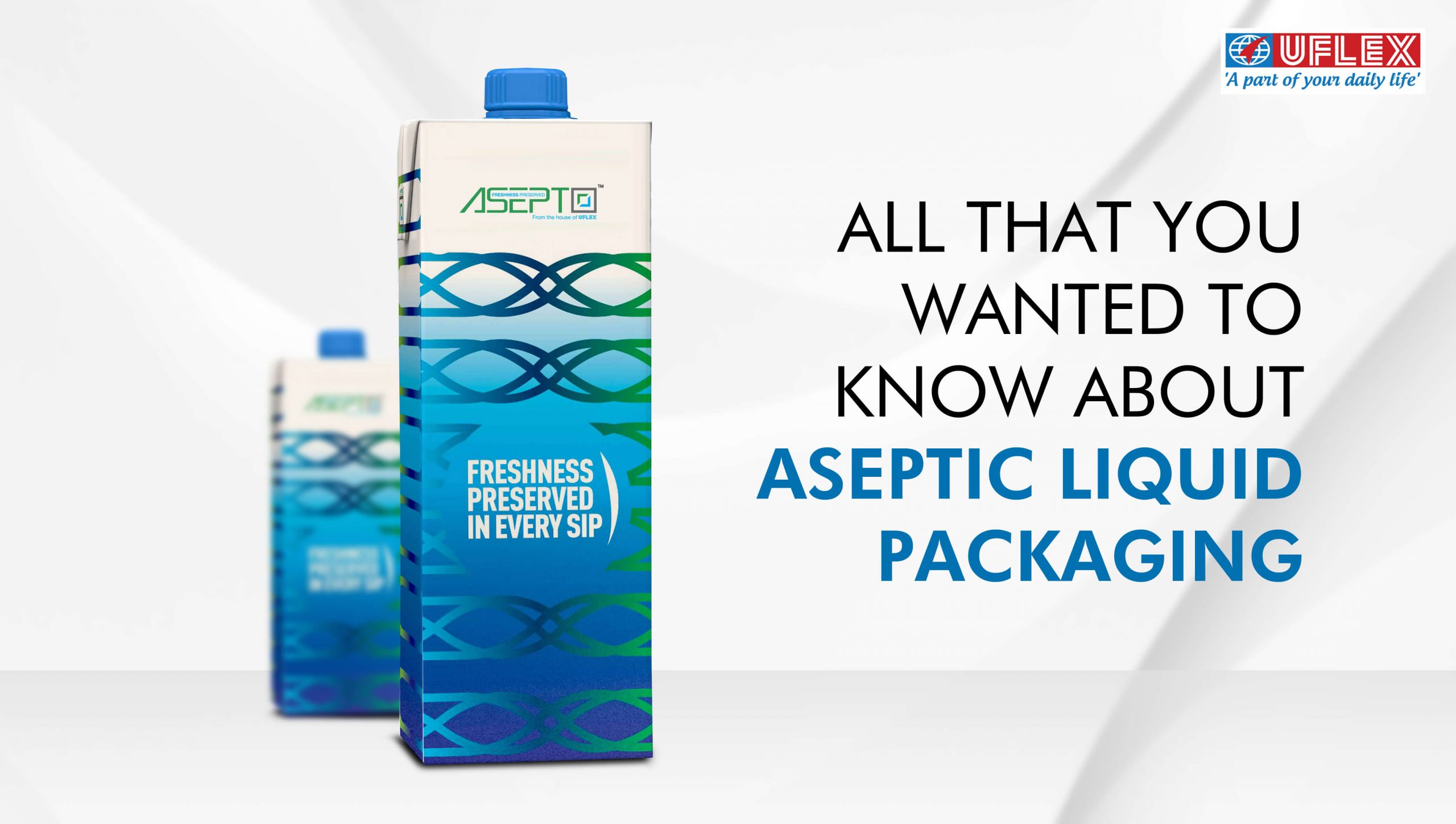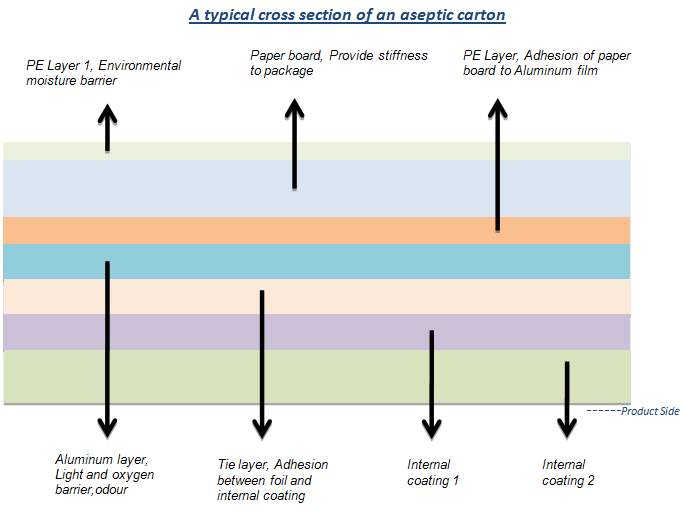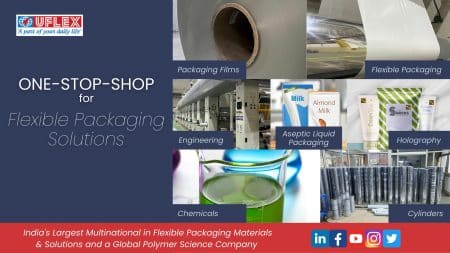Aseptic packaging is defined as the filling of a commercially sterile product into a sterile container under absolutely un-contaminated conditions and hermetically sealing the containers ruling out the possibility of any reinfection. This results in a product, which is shelf-stable at ambient conditions. The term “aseptic” is derived from the Greek word “septicos” which means the absence of putrefactive micro-organisms.
Therefore Aseptic packaging is a means of ensuring that food remains sterile and free from bacteria and other harmful microorganisms for a period of 8 months under room temperature. The specialty of this packaging material is that the product packed in this packaging need not to be kept in refrigerators.
Aseptic Packaging market in India is majorly classified into 3 segments i.e. Juice, Dairy Segment and Liquor segment. The Packaging of Flavored Milk, Dairy products and Liquor etc. in Aseptic packaging material will play a key role in propelling the growth of aseptic packaging in the coming years both in India and globally.
Aseptic packages are made by combining Poly ethylene with paperboard and aluminum foil. The multi-layered construction enables the carton to protect the contents from various factors responsible for spoilage.
- The aluminum foil layer is a strong barrier for O2 and light.
- The inner plastic layer made of polyethylene makes it possible to seal through the liquid.
- The paper layer provides stiffness, making it possible for the cartons assume a brick shape, thus enabling maximum utilization of available storage and transportation space.
Printing, creasing and punching of Paper Board is done on the printing machine. This is followed by the lamination of Paper board on the extrusion machine with Aluminum film and a different type of Polyethylene.
The rolls from the Lamination machine are converted to rolls of smaller width as per the required size of package i.e. 200 ml, 100 ml, 1000 ml etc.
The finished rolls are sent to the customer where these rolls are run on the filling line and the desired product (juice,milk,liquor) are filled into the packages.
Presently the Indian Aseptic Liquid Packaging Market is growing @17-18% per annum and the market is expected to double up in the next five years to approximately 20 billion packs per annum. Drawing parallels, China boasts of a tremendous growth story which has already reached approximately 80 billion packs. In India with similar population the growth potential is humungous. Aseptic Packaging Manufacturing is the BIG THING for taking UFlex to the NEXT LEVEL of Business Excellence. We are all set to take off in the Indian market and position this business globally.
UFlex is India’s largest multinational flexible packaging materials and Solution Company and has recently launched its Aseptic Liquid Packaging Manufacturing Brand ASEPTO. The word ASEPTO is derived from ASEPTIC.
Being the fully integrated flexible packaging solution company that it is, UFlex is also engineering aseptic liquid filling machines with a speed of 7,500 packs / hour for a typical 200 ml pack.
The plant has been set up with an initial Capex of INR 580 crore (USD 85.55 million) and will employ 250 people in the first phase. The plant will be environment friendly with zero discharge. Solar panels and Passive Architecture-Envelop Insulation have been used to preserve natural light besides conserving power energy. With the aseptic liquid packaging plant going operational, UFlex will complete its entire product bouquet which currently spans across packaging solutions for solids, semi-solids, granular material, powders, pastes, gels and viscous fluids.
The capacity of Aseptic Liquid Packaging plant will be 7 Billion Packs and will be commercially operational by April 2017. The proposed plant is equipped with latest machines from world class OEMs that make world class Aseptic packs and re-affirms UFlex commitment to Government of India’s flagship scheme of Make in India.





